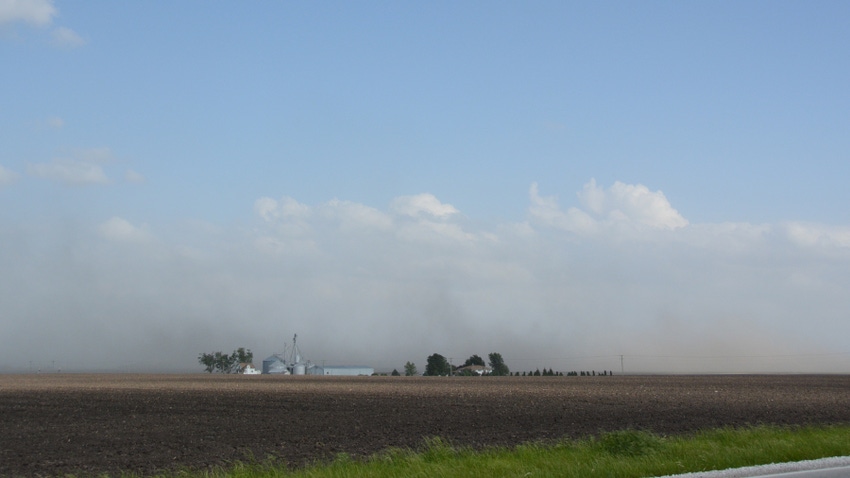May 26, 2023

On May 1, news reports from central Illinois indicated a large dust storm moving across Interstate 55, ultimately causing closure of the interstate and a large and devastating series of accidents that resulted in the loss of several lives.
In a flashback to the 1930s, a dust storm was once again the lead news story across the nation. Lessons were learned after the Dust Bowl. Changes were made and an agency, the Soil Conservation Service, was formed to assist farmers with soil conservation — and agriculture moved forward.
Great progress has been made, and what was once a frequent occurrence has become almost a thing of the past. The storm in Illinois made it clear that more can still be done, though, and the Natural Resources Conservation Service, formerly the Soil Conservation Service, is as committed now as when SCS was founded, helping farmers help their land and ensuring soil is staying on farm fields where it belongs.
The root cause of a dust storm is relatively simple: tilled soils resulting in no soil cover, dry conditions, open fields and high winds. Two of those things are out of the farmer’s control: rainfall and high winds. The other two are within the farmer’s control.
The cause of the 1930s Dust Bowl was the same. Fragile land was converted to cropland to feed the World War I effort during a time of above-average rainfall. The rains quit, the winds started, and the resulting dust blew all the way to Washington, D.C. During that period of American agriculture, technology required a moldboard plow to prepare soil for planting, so a farmer had little choice but to till the soil or plant a permanent cover crop.
Changes in 90 years — or not?
Many fields have become larger. Native trees and fencerows were removed, reducing natural protection from wind erosion. Windbreaks, whether natural or planted, coupled with soil cover will reduce the potential of wind erosion if there are high-wind events during early-spring dry periods. This soil cover can be standing corn residue or residue from a cover crop, but surface cover protects the soil from both wind and water erosion.
Every planter built in the last 40 years will plant in no-till conditions. If your corn planter will plant in blacktop, it will not have any trouble planting in untilled soil. Many farmers across the Corn Belt have reduced tillage, incorporated cover crops and moved to a system that builds soil, greatly reducing the potential for both wind and water erosion. Are you ready to take that step toward a soil health system?
Be proactive and make a change, if you have not already done so. There is help available. Other farmers, ag retailers, NRCS, soil and water conservation districts, Extension educators and other knowledgeable people will assist you on your journey toward change. Be part of the positive impact agriculture can have on this Earth, so the next news story is about how farmers have built up their soil and not about a devastating dust storm.
For more information about building a soil health system on your farm, contact the local SWCD or NRCS office.
Donovan is a district conservationist with NRCS. He writes on behalf of the Indiana Conservation Partnership.
Read more about:
Soil ErosionAbout the Author(s)
You May Also Like






